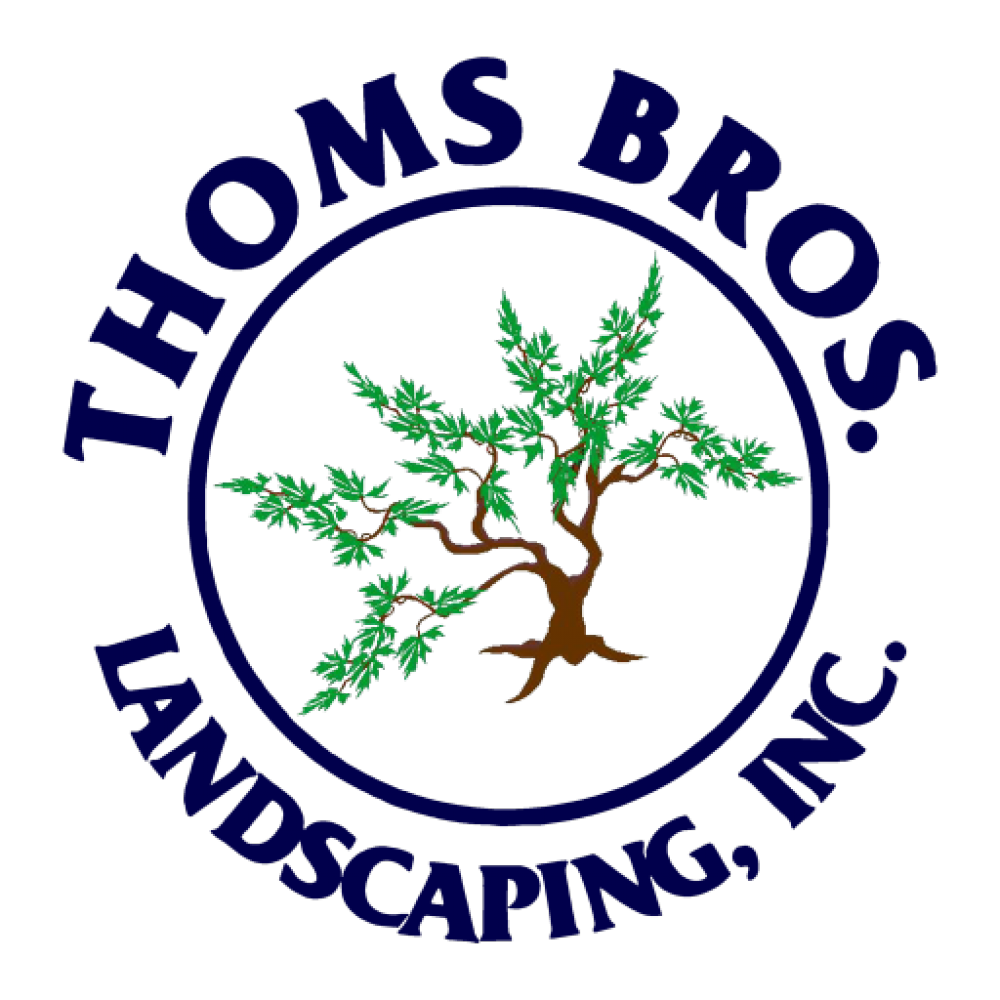It’s that time of year you will see an explosion of White flowered trees throughout neighborhoods, down streets, on business and educational campuses, and even in the wild. This is the Flowering Pear or horticulturally known as Pyrus calleryana. The difference between fruiting pear trees and ornamental Callery Pear trees is their fruit. Although ornamental pear trees are called ornate fruitless pear fruit, the pears are exceedingly small, measuring only about half an inch (1 cm). Pyrus calleryana fruit also tastes bitter, and, for most people, the small pears are inedible.
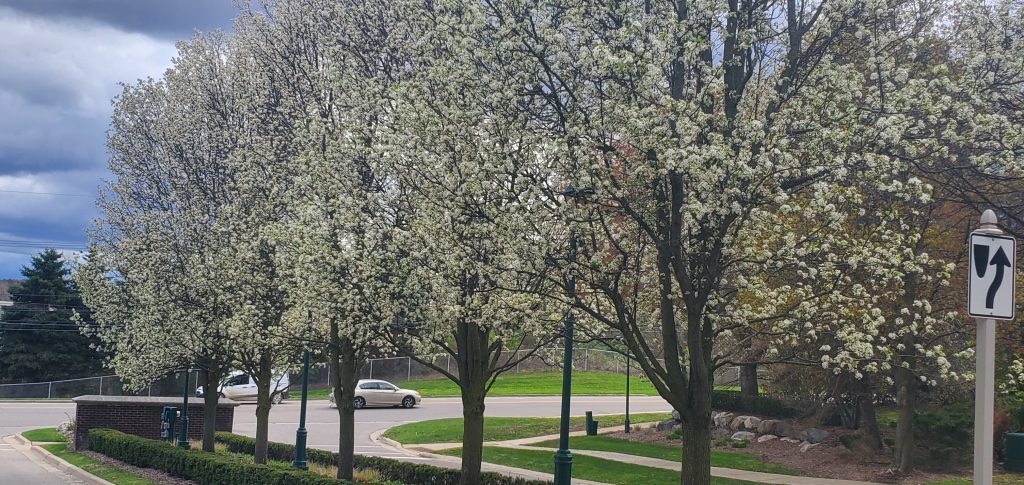
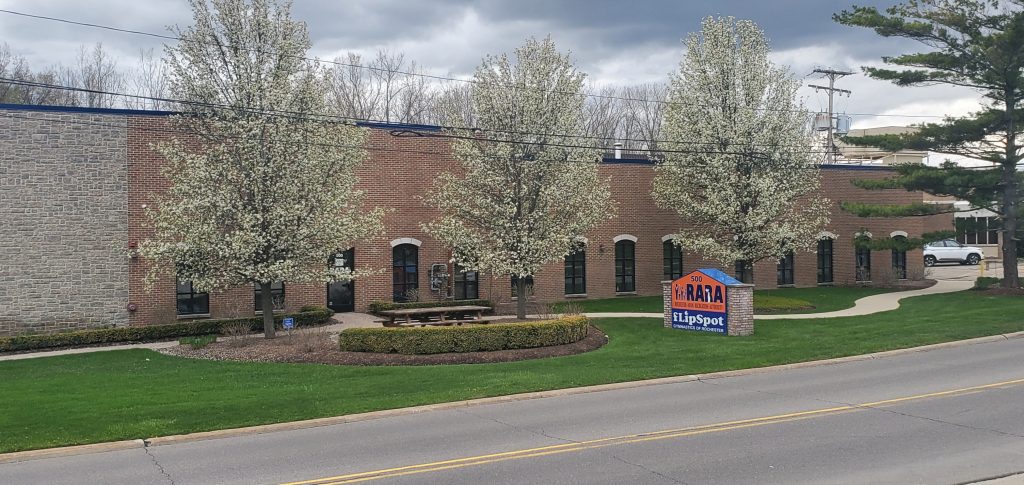
Ornamental pear trees are deciduous flowering trees with shiny green leaves, cup-shaped white flowers, and beautiful fall colors. Callery Pear cultivars are generally easy to care for landscaping trees. Unlike fruiting pear trees, Pyrus calleryana isn’t a messy tree that drops a lot of fruit. Additionally, ornamental pear varieties are heat and drought-tolerant and are resistant to many fruit tree diseases. These facts make ornamental pear trees popular for front and backyards. Ornamental flowering pear trees grow in USDA zones 5 through 9.
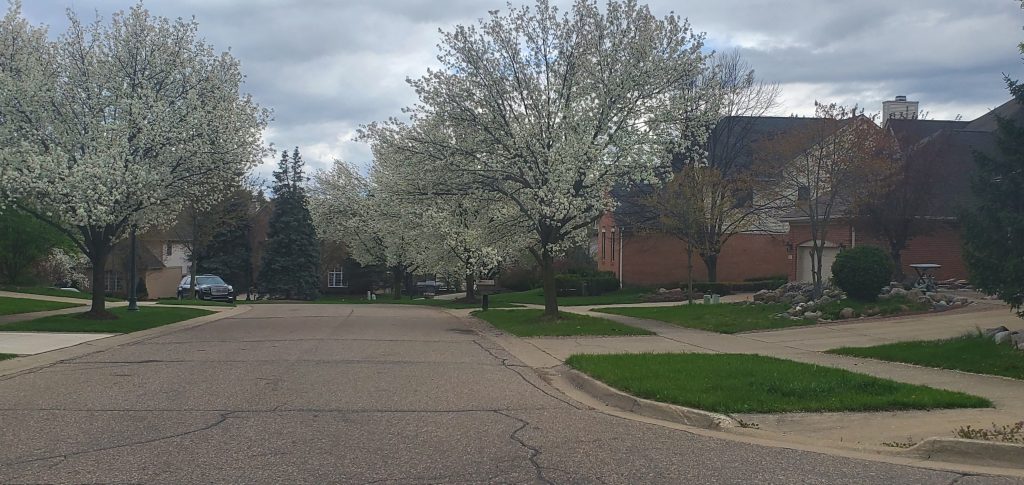
Many cultivars of this plant have been created over the years, included:
- Bradford – 1st cultivar created, beautiful, blight and borer resistant but prone to breakage.
- Aristocrat – An outstanding pear selection with an unusual growth habit, Aristocrat® has an open, informal appearance. Branch angles are wider than other pears, thus more resistant to storm damage. Highly rated by the Ohio Shade Tree Evaluation Project. (40’x28’)
- Chanticleer ‘Glen’s Form’ – Tight growing, gorgeous and resistant, less suckering (40’x15’)
- Autumn Blaze – Rounded shape with spreading branches. Foliage emerges with a red tint and matures to glossy green. Best cold hardiness of the Callery pears, and the earliest to develop fall color.. (30’x25’)
- Capital – A narrow vase-shaped crown and masses of white flowers are the identifying features of the ‘Capital’ pear cultivar. (35’x12’)
- Jack (‘Jaczam)’ – Tight and upright in form, this cultivar is ideal for narrow streets and planting beneath utility wires. Its dwarf growth rate results in a cultivar that matures at less than half the size typical of the species. Its density and upright habit give the unusual combination of a formal appearance in a low maintenance tree. (16’x10’)
- Redspire – Originated as a seedling of ‘Bradford’, this tree in bloom is a mass of large white flowers borne in large clusters. It is well-adapted to urban growing conditions and atmospheric pollution. Fruit is yellowish green; foliage is glossy and leathery. (35’x30’)
- Cleveland Select – A gracefully symmetrical tree with perfect uniform growth that needs very little maintenance. Therefore, it is a useful specimen to plant along driveways and roads. (40’x20’)
With these great attributes of fast growing, limited disease/insect issues, glossy green leaves with vibrant fall colors, and beautiful Spring flower led to explosion of the use of this tree. Clients demanded them, landscape architects specified them, and landscape contractors recommended so nursery growers kept producing them. Thoms Bros. has planted hundreds maybe even thousands of these trees over the years, but have we all created a bigger problem?
Pyrus calleryana was brought to the United States in the early 1900s to help combat the fire blight epidemic in European pear fruit trees. A few decades later, one particular tree was noticed to have a uniform shape, profuse white flowers, no thorns, and bright red fall foliage. The Bradford Pear, as it was named, was later planted throughout the Southeast and became a very popular ornamental tree. Bradford pear trees are self-incompatible, meaning two Bradford pear trees will not produce a viable fruit. But, as other P. calleryana cultivars became more popular and as wilder Callery Pears began to grow on the landscape, all the flowering P. calleryana pear trees began to cross pollinate and produce abundant amounts of fruit that were spread by birds. This Chinese native has spread aggressively seeding out into natural areas (see woodland picture from Indiana) and becoming a massive invasive problem. In some U.S. regions (see map) this ornamental Pear has become the dominant tree species in the “wild” outcompeting Natives. Although it has yet to be put on Michigan Invasive Species Program, you can see from the picture below it has reached into our wildlife.
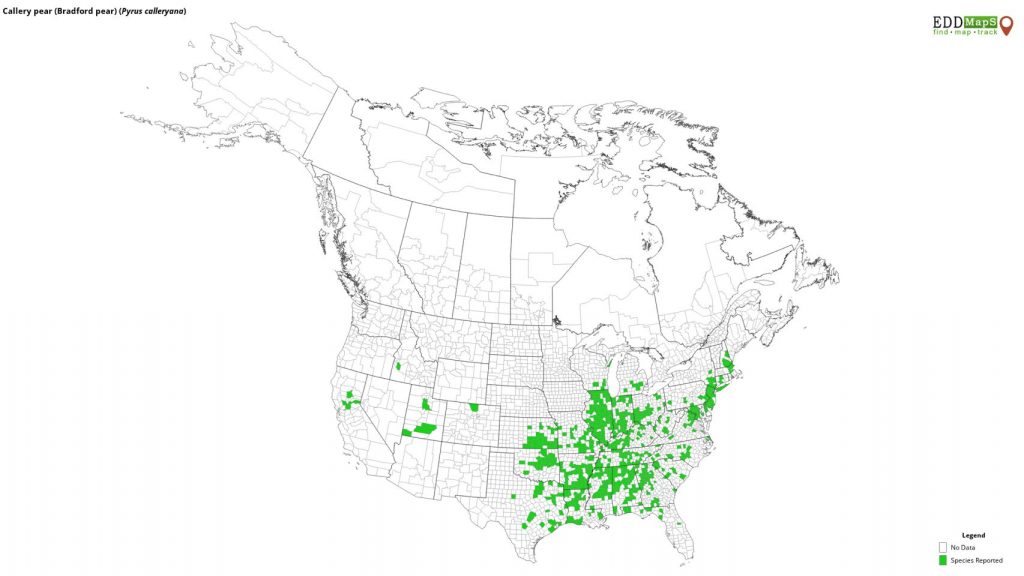
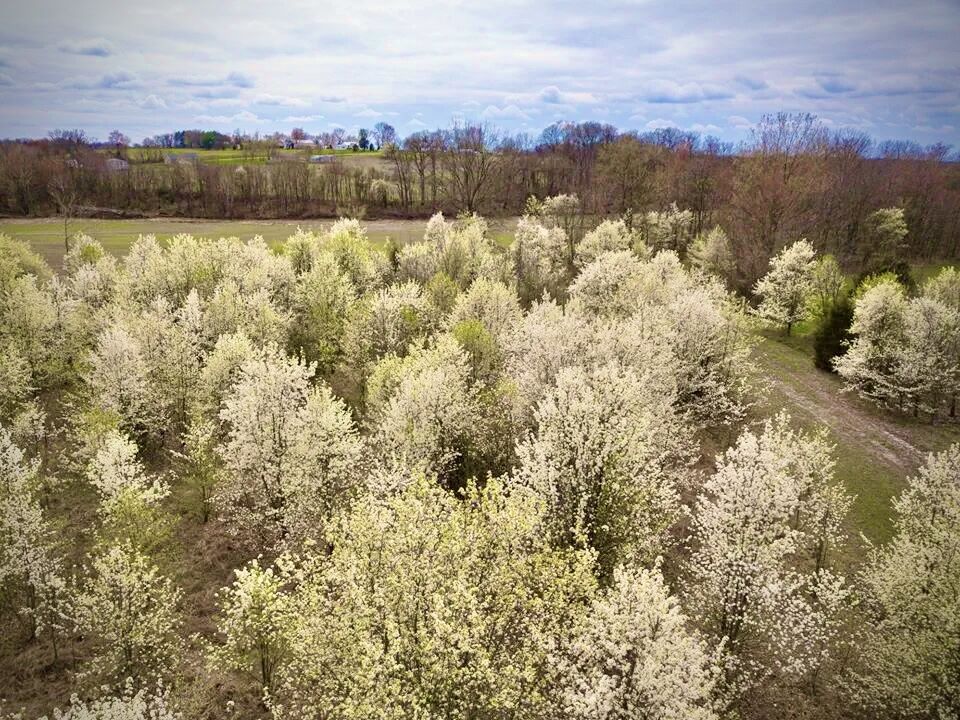
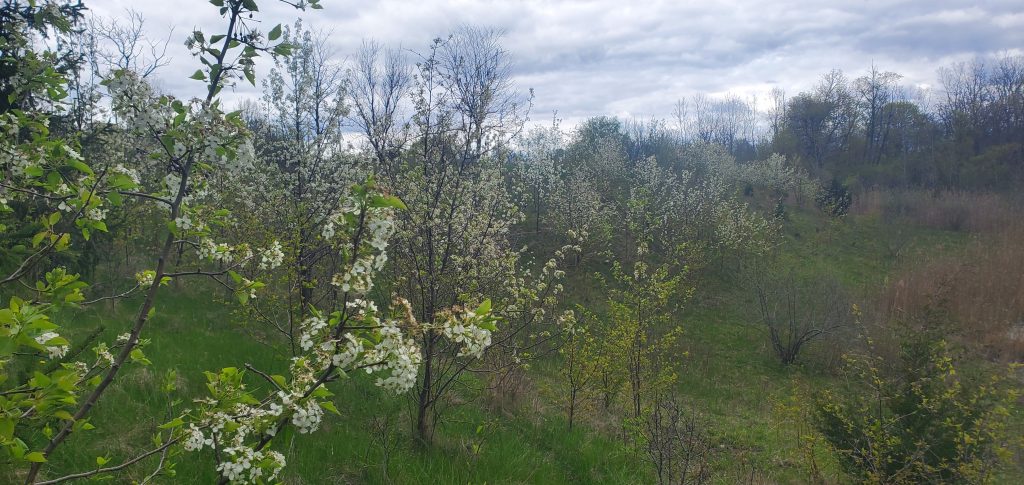
Another issue many people do not realize, is that this tree has a short lifespan of 15 -25 years. Now this usually isn’t a problem if you understand that, but most homeowners and property owners are not planning for this. This is not your tree if you are expecting to plant it and forget about it for your lifetime….this is not an Oak. Just like shrubs, this plant should be considered for its lifespan for the design and maintenance aspects of the landscape.
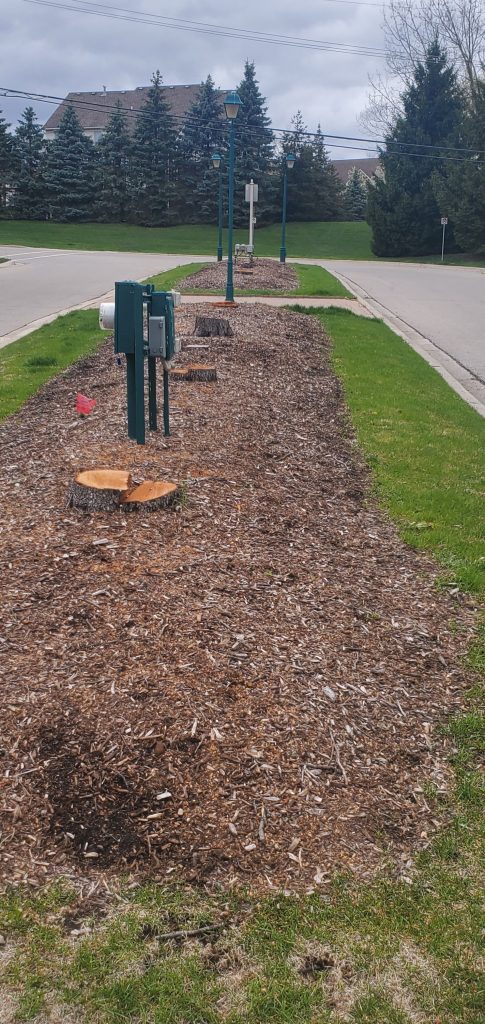
Due to its quick growth habit and short lifespan, plant damage can easily be seen after a wind, ice or snowstorm. This past Winter we saw a heavy ice storm one week in March and just a week later a heavy, wet snowstorm followed. While most of the damage was seen on evergreen trees such as Spruce and Arborvitae, I also witnessed many Flowering Pears seeing light to heavy damage.
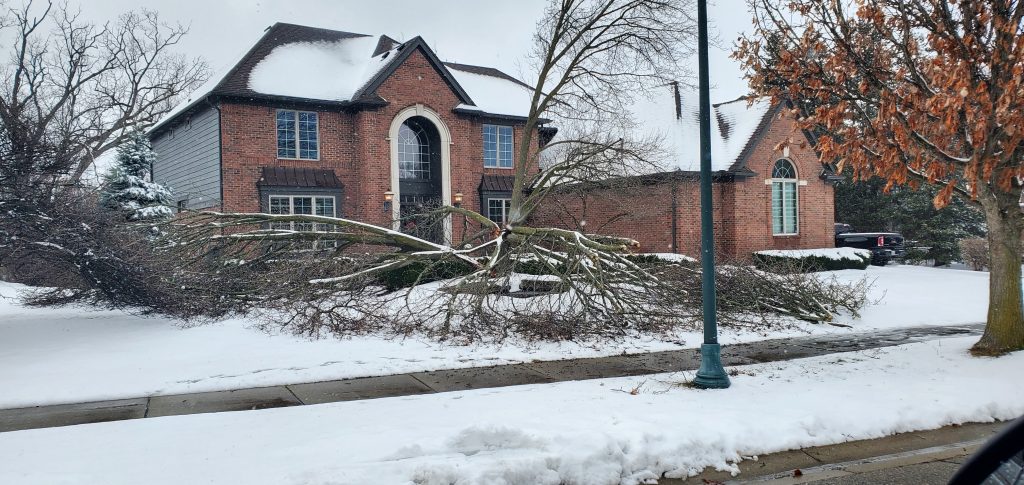
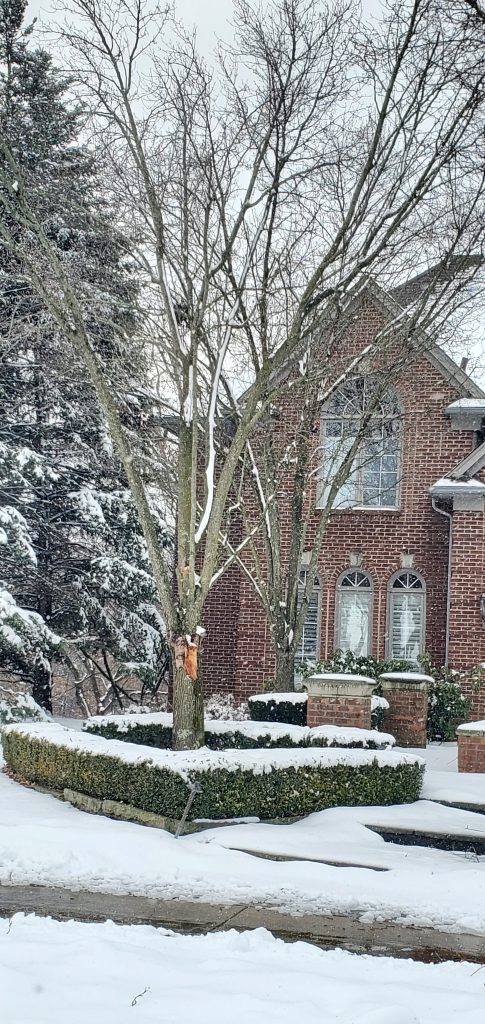
Should we stop growing and planting Callery (aka Flowering) Pear? I do not think so but we definitely need to have better balance. Plant more native trees. One other thing we need to remind ourselves of overplanting certain plants is that it catches up with us regarding insects and disease. The City of Detroit had miles of large, mature Elm trees lining residential and other streets. Elm was loved for its suitability to pollution, various soil conditions, and general tolerance to city life. But in the 1950s the Dutch Elm Disease (DED) enter the city and wiped out a half million trees by the 1980s. Both the Green and White Ash became a favorite of the industry for its ability to survive in most conditions. Not only were Ash trees common in planned landscapes, but they populated our woods as well. In 2002, the Emerald Ash Border arrived in Southeast Michigan hidden in a wood pallet from Asia and has been responsible for the death of tens of millions of ash trees in 30 states.
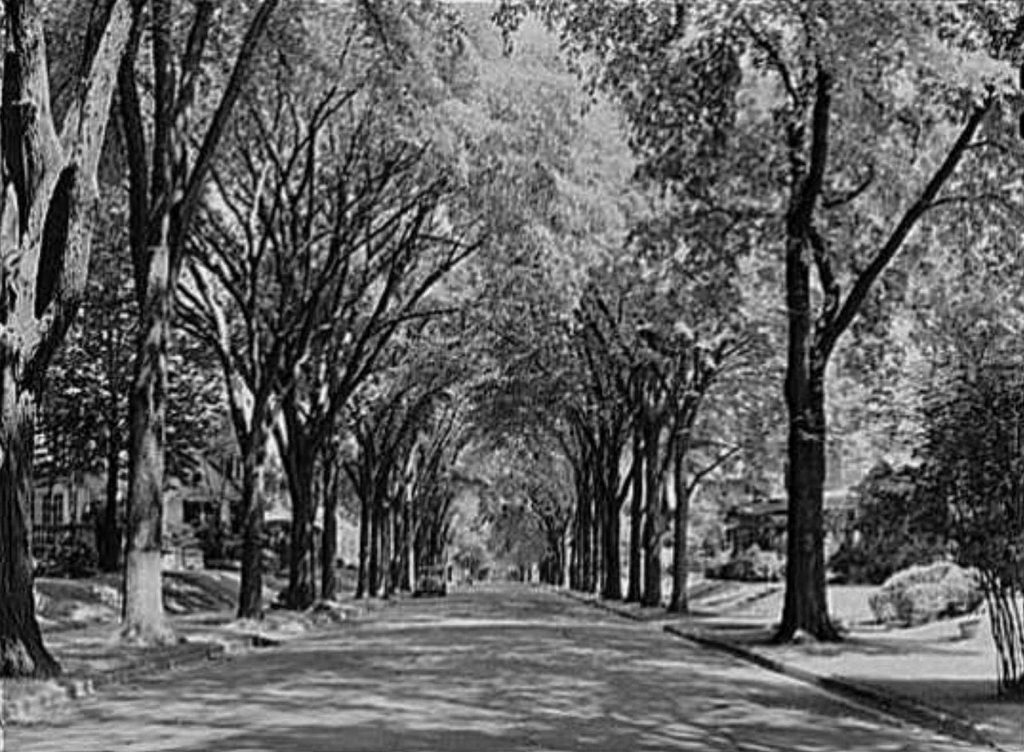
Diversity and balance are always a great answer for many things in life. Enjoy sweets but do not make it an every day diet. Exercise consistently but do not let it take over your life. Watch TV but do not become a couch potato. Collect interesting things but do not become a hoarder. Everyone and every situation are different for what is the right balance. Educating ourselves of all what is available and the possibilities of the future by studying the past will help us make the correct choices for everything in our lives including the right tree in the right spot.
Resource:
Invasive Org/ https://lnkd.in/g8y2HRyJ
USDA National Invasive Species Info Center/ https://lnkd.in/gqRjzJuk
USGS/ https://lnkd.in/gKmBRf_j
Smithsonian – Top 6 Invasive Plant Species/ https://lnkd.in/gyyhMNdh
Washington Post/ https://lnkd.in/gx552ns3
